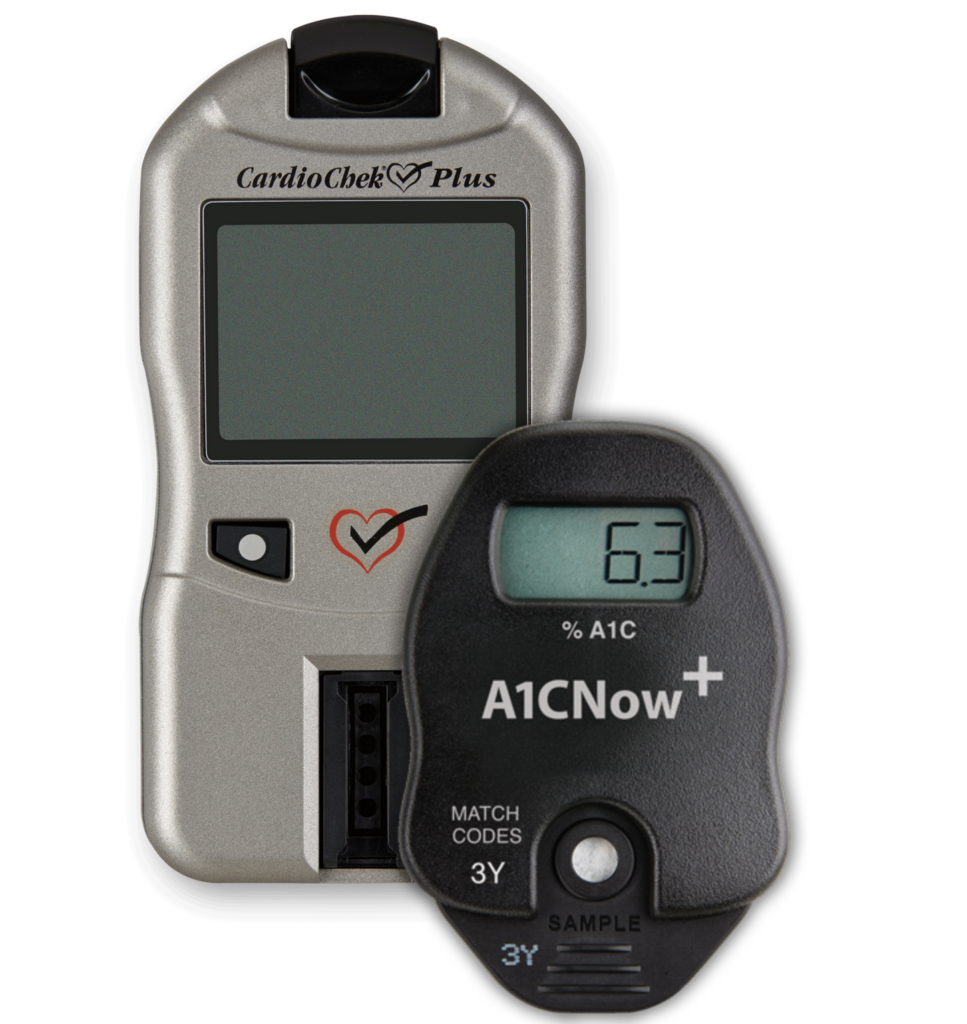
Helping healthcare providers
get the results they need,
when they need them
WHAT IS PREVANTAGE?

A network of healthcare
partnerships with a
shared passion.
PreVantage provides products, solutions and programs which close gaps in care for patients with chronic disease.
WHAT IS PREVANTAGE?

What do we offer?
Fast and accurate point-of-care lipid, glucose, and A1C results. More meaningful connections between healthcare providers and their patients.
Patient Satisfaction
Partnership Networks
Provider Satisfaction
Target Ranges
Quality Control
Biometric Device Connectivity
Patient Satisfaction
Partnership Networks
Provider Satisfaction
Cost Reductions & Efficiencies
Quality Control
Biometric Device Connectivity
DISEASE STATE DRIVERS: Diabetes and Cardiovascular Disease

Point-of-care lipid panel and A1C testing can help support…
Diabetes Education:
Can help newly diagnosed diabetes patients better understand their A1C and lipid panel results and set goals, all in one appointment.
Care Plan Evaluation:
Quickly identify when patients are struggling to meet their goals and help them adjust their approach to treatment.
Patient and Provider Experience:
Can reduce transport and processing delays, and provide rapid feedback of test results to medical decision-makers.


Committed to helping medical professionals
and their patients achieve better health outcomes. Our analyzers have helped assess those at risk for cardiovascular disease and diabetes worldwide.
Learn more about the CardioChek® Plus and A1CNow®+
TARGET MARKETS
Walk-in Clinics
23% of US residents do not have a primary care physician. More are turning to walk-in clinics for routine care and chronic disease management.1
Point-of-care lipid and glucose testing can help providers address gaps in care for patients with chronic conditions.
Patients can access health service at times that fit into their schedules and lifestyles.
Physicians' Office & Labs
Simultaneous lipid and glucose results in as little as 90 seconds.
A1C results in 5 minutes.
Patients can access health service at times that fit into their schedules and lifestyles.
Screening & Wellness
Accurate results in minutes may allow for fast and efficient screening at events
Portable, no A/C power required.
Test strips do not require refrigeration.
Nursing
Early interventions in chronic health conditions like diabetes and cardiovascular disease.
Better education and improved self-care for patients.
Improved workflows and possible reductions in hospitalizations and readmissions2.
Pediatrics
The American Academy of Pediatrics recommends cholesterol testing for all children between 9 and 11 years old or between 2 and 10 years old who have parents or grandparents diagnosed with blood cholesterol levels of 240 mg/dL or higher.3
Obtain full lipid panel results in as little as 90 seconds, measuring lipids and glucose simultaneously.
Home Health
May help reduce the number of office visits needed.
May increase access to timely care in populations that lack nearby healthcare infrastructures.
May better enable patients to participate in telehealth consultations.
Endocrinology
Can help new diabetes patients better understand their A1C and lipid panel results, all in one appointment.
Same-day results and consultations, can reduce time lost to scheduling and rescheduling appointments.
Can help identify when patients are struggling to meet their health goals and help them adjust their approach to treatment.
Retail Pharmacies
Obtain preventative health services and related medications in one convenient location.
Address gaps in care for patients with chronic conditions such as diabetes and cardiovascular disease.
Increase healthcare engagement, consumer loyalty and foot traffic.
Telehealth
Support patients who are vulnerable to complications from COVID-19.4
Remotely monitor patients’ progress toward health goals and adjust therapies as needed.
Conduct A1C testing during a virtual visit.
Remote Patient Monitoring
Can allow providers to offer all the benefits of A1C testing to patients who prefer virtual appointments.
May facilitate early treatment interventions.
May improve the patient’s experience.5



Be our Partner
We will collaborate with you directly to recommend a customized solution based on your unique goals and challenges.
* These fields are required.

1 Calculated figure based on 2010 U.S. Census Data and two reports from the Kaiser Family Foundation (KFF): Percent of Men who Report Having No Personal Doctor/Health Care Provider, by Race/Ethnicity. (2018, September 27). Retrieved November 18, 2019, from https:// www.kff.org/disparities-policy/state-indicator/percent-of-men-who-report-having-no-personal-doctorhealth-care-providerby-raceethnicity; Percent of Women who Report Having No Personal Doctor/Health Care Provider, by Race/Ethnicity. (2018, October 9). Retrieved November 18, 2019, from https://www.kff.org/disparities-policy/state-indicator/no-personal-doctor/
2 Jones, M. G., DeCherrie, L. V., Meah, Y. S., Hernandez, C. R., Lee, E. J., Skovran, D. M., … Ornstein, K. A. (2017). Using Nurse Practitioner Co-Management to Reduce Hospitalizations and Readmissions Within a Home-Based Primary Care Program. Retrieved January 20, 2020, from https://www.ncbi.nlm. nih.gov/pmc/articles/PMC5348286/
3 AAP: Cholesterol Levels in Children and Adolescents, 12/3/2015: https://www.healthychildren.org/English/ healthy-living/nutrition/Pages/Cholesterol-Levels-in-Children-and-Adolescents.aspx
4 Fang, L., Karakiulakis, G., & Roth, M. (2020, April). Are patients with hypertension and diabetes mellitus at increased risk for COVID-19 infection? Retrieved April 21, 2020, from https://www.ncbi.nlm.nih.gov/pmc/articles/PMC7118626/
5 American Heart Association. (2019). Using Remote Patient Monitoring Technologies for Better Cardiovascular Disease Outcomes Guidance. [PDF File]. Retrieved August 28, 2020 from https://www.heart.org/-/media/files/about-us/policy-research/policy-positions/clinical-care/remote-patient-monitoring-guidance-2019.pdf?la=en

